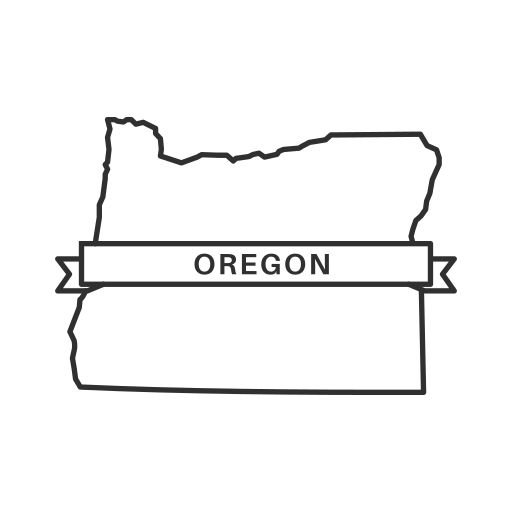Oregon Agriculture Statistics 2023: Facts about Agriculture in Oregon reflect the current socio-economic condition of the state.

LLCBuddy editorial team did hours of research, collected all important statistics on Oregon Agriculture, and shared those on this page. Our editorial team proofread these to make the data as accurate as possible. We believe you don’t need to check any other resources on the web for the same. You should get everything here only 🙂
Are you planning to start an Oregon LLC business in 2023? Maybe for educational purposes, business research, or personal curiosity, whatever it is – it’s always a good idea to gather more information.
How much of an impact will Oregon Agriculture Statistics have on your day-to-day? or the day-to-day of your LLC Business? How much does it matter directly or indirectly? You should get answers to all your questions here.
Please read the page carefully and don’t miss any words.
On this page, you’ll learn about the following:
Top Oregon Agriculture Statistics 2023
☰ Use “CTRL+F” to quickly find statistics. There are total 10 Oregon Agriculture Statistics on this page 🙂Oregon Agriculture “Latest” Facts
- About 2,000 varieties of soil can be found in Oregon.[1]
- 30% of Oregon’s total sales came from livestock and poultry.[1]
- 80% of Oregon’s agricultural products were exported, about 33% of the country’s exports.[1]
- Oregon accounted for 69% of crops from its total sales.[1]
- Eleven thousand six hundred sixty-two farms in Oregon, with 2.9 million in sales in 2017, or barely 0.1% of all farms, sold less than $1,000 in agricultural goods.[1]
- 8% of Oregon’s farms had sales between $100,000 and $500,000; these businesses accounted for 13% of the state’s 666 million sales in 2017 and 2,844 farms in the state.[1]
- 13% of Oregon’s GDP came from agriculture, accounting for $2.57 billion in exports and $5.01 billion in production.[1]
- Oregon’s family-owned and operated farms and ranches accounted for 96.7% of the state.[1]
- The COVID-19 virus severely damaged Oregon’s economy, including the agriculture sector, with over 90% of firms in the state reporting negative effects. Small business pulse survey by the U.S. Census Bureau.[2]
- According to a survey by Oregon State University, 12% of farms in Oregon, which is more than twice the national average, participate in direct-to-consumer marketing, with sales of over $53 million coming from an estimated 4,252 farms in 2015.[1]
Also Read
How Useful is Oregon Agriculture Facts
One of the key benefits of Oregon agriculture facts is their utility in informing policymaking at the local, state, and national levels. By offering insights into the size, scope, and economic impact of the state’s agricultural sector, this information helps lawmakers develop policies that support and promote agricultural growth. For instance, data on crop yields, production values, and employment in the agricultural industry can guide policymakers in establishing agricultural subsidy programs, regulating farming practices, and implementing conservation efforts to sustainably manage Oregon’s natural resources.
Furthermore, Oregon agriculture facts are instrumental in assisting farmers and agricultural businesses in making strategic decisions about their operations. This data enables farmers to evaluate market trends, identify emerging opportunities, and adjust production practices to meet consumer demands. By understanding key statistics such as crop prices, export markets, and technological innovations in agriculture, farmers can enhance their competitiveness and profitability in an increasingly globalized marketplace.
Consumers also benefit from Oregon agriculture facts by gaining insight into where their food comes from and how it is produced. By knowing about the variety of crops grown in the state, the farming methods used, and the impact of agriculture on the environment, consumers can make more informed choices about the food they purchase and support sustainable agricultural practices. Additionally, understanding the economic significance of agriculture in Oregon helps consumers appreciate the importance of supporting local farmers and food producers.
Oregon agriculture facts also play a crucial role in raising awareness about the challenges and opportunities facing the state’s agricultural industry. By highlighting issues such as water scarcity, labor shortages, climate change, and food insecurity, this information fosters public dialogue and encourages collaborative efforts to address these challenges. Moreover, by showcasing success stories, innovative practices, and contributions of farmers to the economy and community, Oregon agriculture facts help promote appreciation for the hard work and dedication of those involved in agriculture.
In conclusion, Oregon agriculture facts are a valuable resource that provides a wealth of information about the state’s agricultural industry. From informing policymaking and supporting farmers to empowering consumers and raising awareness, these facts serve as a cornerstone for understanding, analyzing, and promoting the importance of agriculture in Oregon. Moving forward, continued access to accurate and timely agricultural data will be essential in ensuring the sustainability and prosperity of the state’s agricultural sector.
Reference
- oregonfb – https://oregonfb.org/about/oregon-agriculture/
- oregon – https://sos.oregon.gov/blue-book/Pages/facts/economy-overview.aspx
